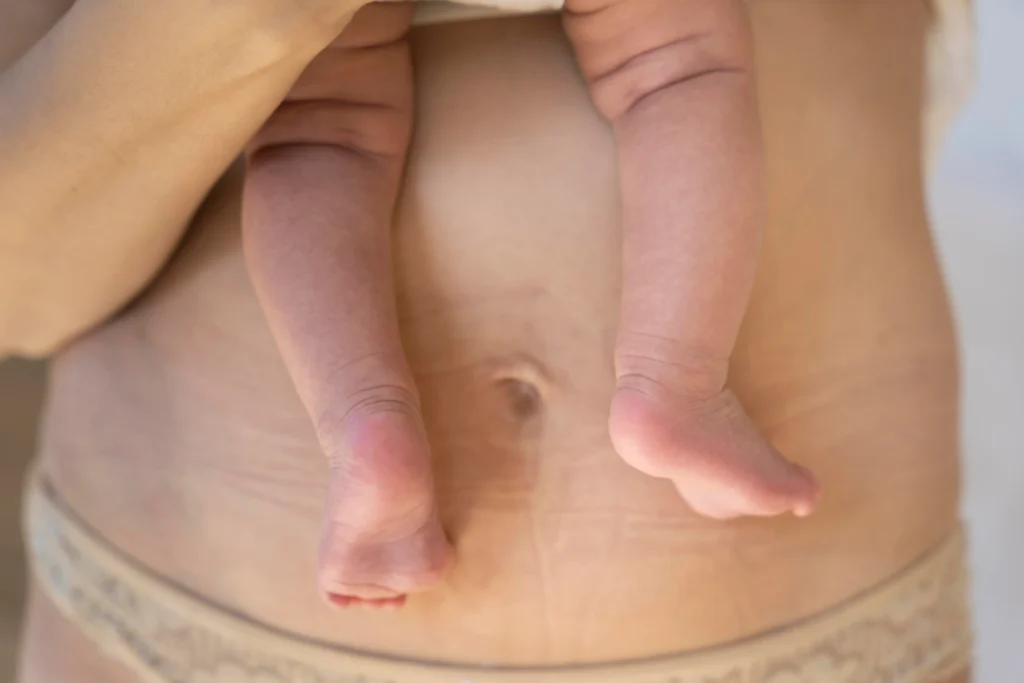
When planning for birth, many factors come into play, and one of the key aspects is your baby’s position in the womb. While some babies settle into an optimal position for birth, others may adopt positions that can slow or complicate labour, potentially leading to the need for induction. Understanding how foetal position affects labour can help you feel more informed and prepared for your birth experience.
How babies move in the womb
Babies move frequently in the uterus throughout pregnancy, especially in the earlier stages when they have more room to turn. Around the third trimester, their movements become more restricted as they grow larger. Most babies settle into a head-down position between 32 and 36 weeks of pregnancy, preparing for birth. However, some may remain in breech or other less favourable positions. In some cases, babies can still turn naturally even in the late weeks of pregnancy, while others
If the baby remains in a position that could make labour difficult or prolonged, induction may be considered to start labour under controlled conditions. This approach is used when a C-section is not immediately necessary, such as when vaginal birth is still considered safe, and the risks of surgery outweigh the potential benefits. Induction may also be recommended if there are additional concerns like prolonged pregnancy, a small amount of amniotic fluid, or maternal health conditions.
The optimal birth position: head-down
Occiput anterior (OA) – head-down position:
In this ideal position, your baby is head-down with their chin tucked to their chest, facing your back. This alignment helps your baby navigate the birth canal more efficiently, reducing the likelihood of complications. With the smallest part of the head presenting first, labour can progress more smoothly.

Foetal positions that may require induction or intervention
- Your baby is head-down but facing your front instead of your back.
- This position can lead to longer and more difficult labour, as the baby’s head may not align as smoothly with the birth canal.
- Labour can still progress naturally, but some cases may require interventions such as induction, repositioning techniques, or assisted delivery.
Breech position – bottom or feet first
- Your baby is positioned with their head near your ribs and their bottom or feet pointing down toward the birth canal.
- In many cases, a planned caesarean birth is recommended for breech babies to ensure a safer delivery.
- If you are considering a vaginal birth, induction may be required if labour does not start spontaneously.
Asynclitic position – baby’s head tilted
- Your baby’s head is tilted to one side instead of being straight, which can make it harder for them to move smoothly through the birth canal.
- This position may make labour progress more slowly, and in some cases, medical support such as induction or assisted delivery might be needed to help things along.
Transverse lie – baby lying sideways
- Your baby is lying horizontally in the womb.
- This position makes a vaginal delivery very challenging and is usually not recommended.
- Induction is usually not recommended in this position, and a caesarean birth is often considered the safest option.
How foetal position can influence induction decisions
If your baby is not in an ideal position as your due date approaches, your healthcare provider may consider options to encourage a better alignment before recommending induction.
- Encouraging movement – Certain exercises, such as pelvic tilts or spending time on all fours, can help encourage your baby to shift into a more favourable position.
- External cephalic version (ECV) – A hands-on technique where your healthcare provider attempts to turn a breech baby into a head-down position.
- Induction with unfavourable positioning – If your baby’s position is making spontaneous labour unlikely, induction methods like mechanical dilators such as Dilapan-S may be recommended.
Myth 5: You have no control over the process
Truth: Labour induction is not a one-size-fits-all approach. Obstetric methods consider individual factors influencing labour, and your healthcare provider will discuss the best options based on your unique situation. Understanding the role of the cervix in childbirth helps mums make informed decisions about their birth plan.
Final thoughts
Understanding the impact of foetal position on labour can help you feel more prepared and proactive. While certain positions may increase the likelihood of induction, various techniques and medical interventions can help support a positive birth experience. If you have concerns about your baby’s position, discussing options with your healthcare provider can provide clarity and reassurance as you prepare for birth.
Disclaimer: This blog post is for informational purposes only and should not be considered medical advice. Always consult with your healthcare provider to address your individual needs and concerns.









